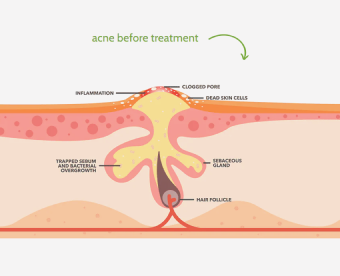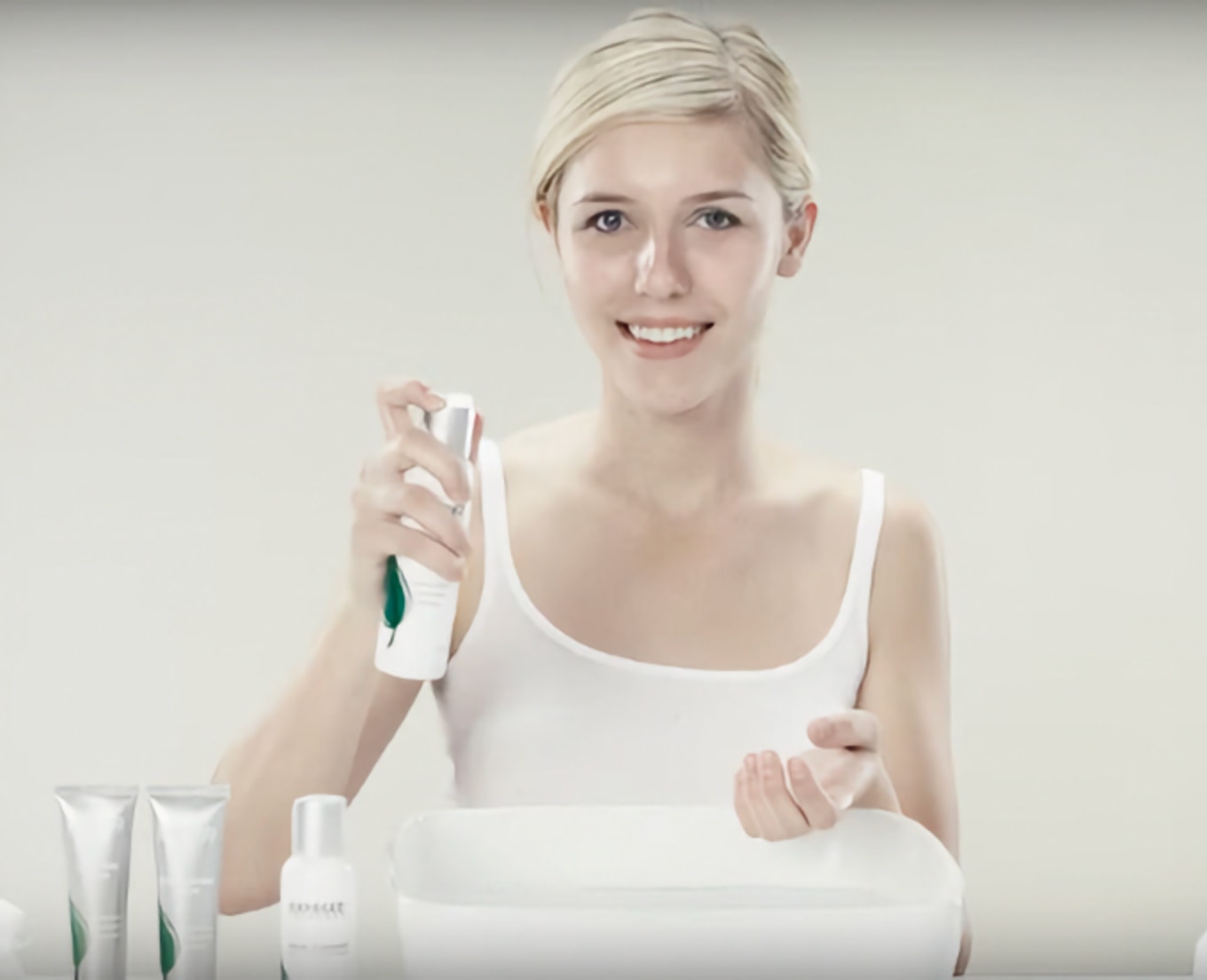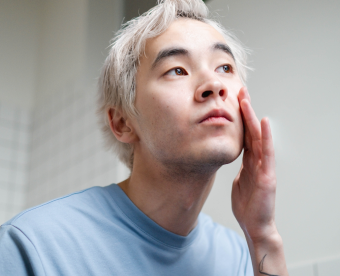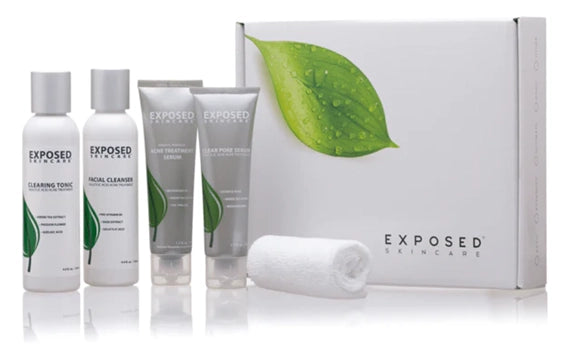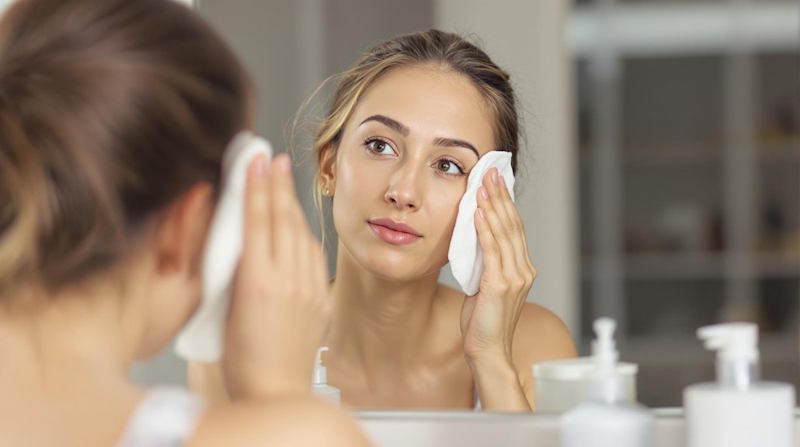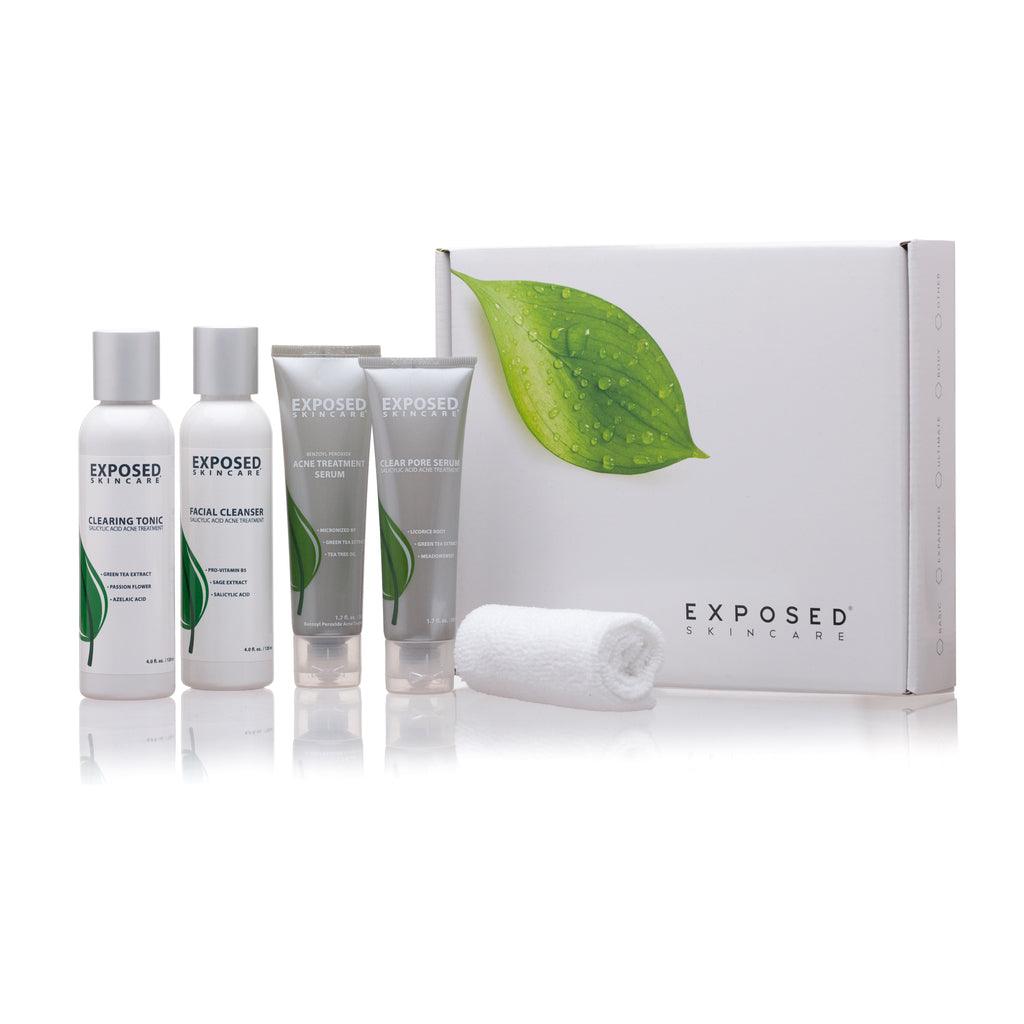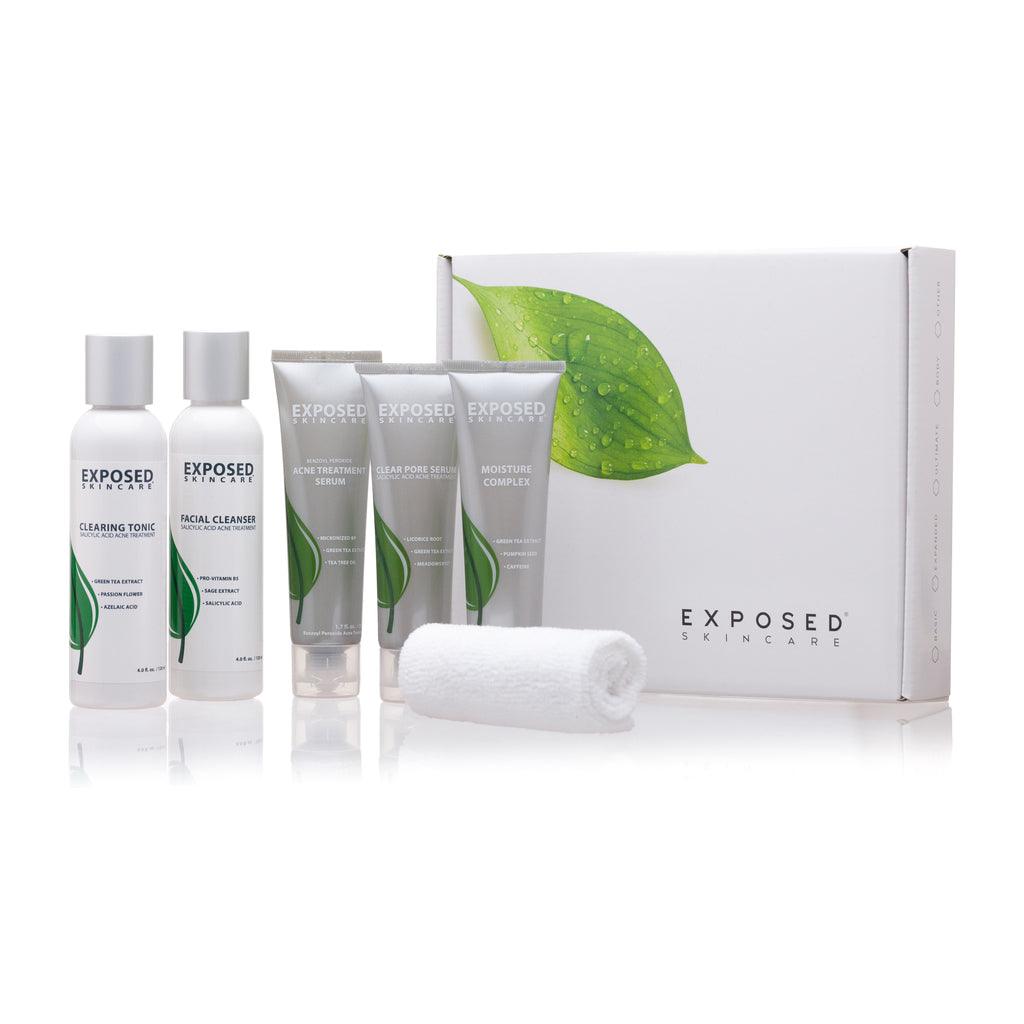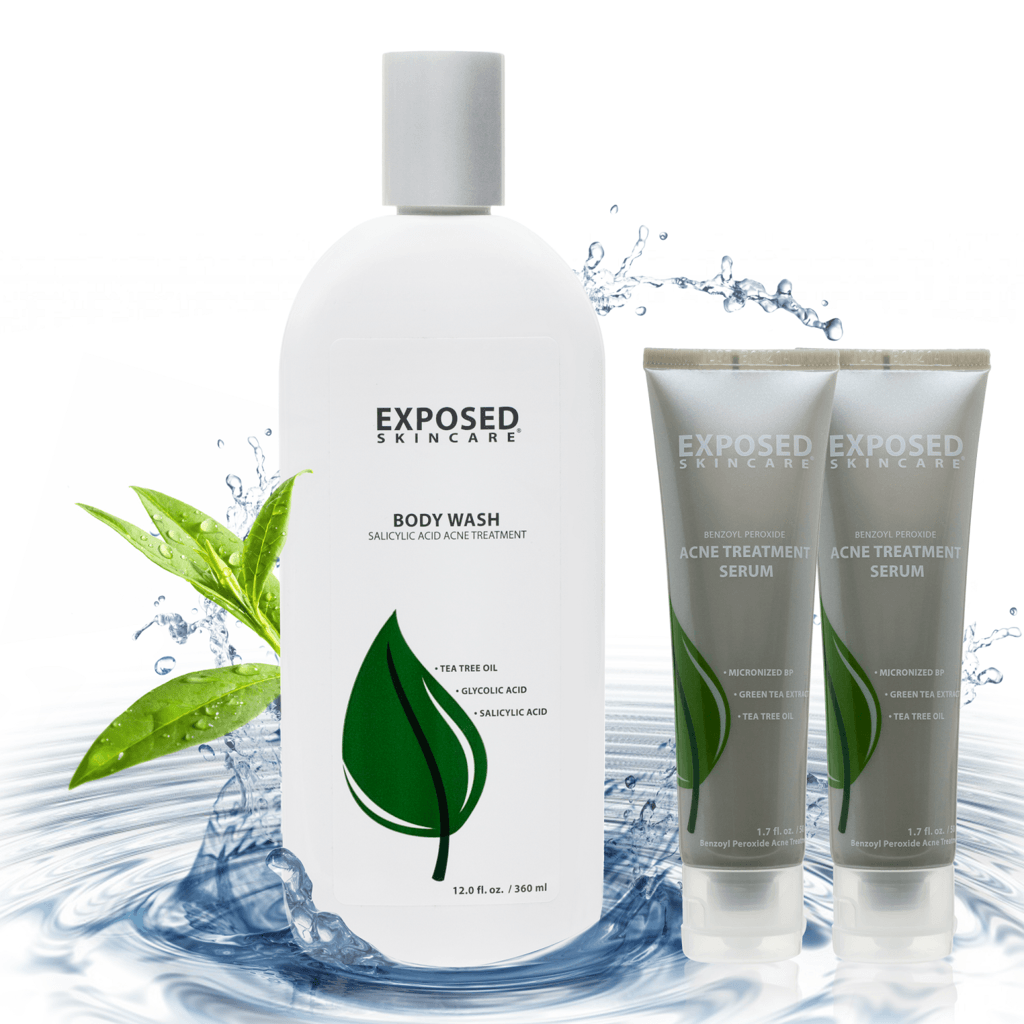Those red bumps could actually be either acne or ingrown hairs - they look frustratingly similar! Most products only tackle one issue, leaving you still struggling. Exposed's system targets both problems simultaneously with salicylic acid and benzoyl peroxide, unclogging pores while freeing trapped hairs. Users see clearer, smoother skin in about 30 days without brutal side effects. Stick around to discover why your current routine might be missing half the battle.
Biggest Takeaways
- Ingrown hairs and acne create similar red bumps but require different treatments for effective resolution.
- Misdiagnosis leads to ineffective treatment as ingrown hairs involve trapped hair while acne involves clogged pores.
- Single-solution products typically address only one condition, leaving the other untreated.
- Exposed's system contains salicylic acid and benzoyl peroxide to simultaneously treat both conditions.
- The 4-step system shows clinical improvements within 30 days for both acne and ingrown hairs.
The Confusing Similarity Between Ingrown Hairs and Acne

When you're peering in the mirror at that angry red bump on your chin, figuring out whether you're dealing with an ingrown hair or a pimple can feel like a dermatological guessing game.
Both show up as those annoying red bumps that make you want to cancel plans and hide under your favorite hoodie.
Here's the real deal: ingrown hair acne isn't technically a thing—they're separate conditions that just happen to look like twins.
Ingrown hairs usually pop up after you've shaved or waxed, with a trapped hair visible under the skin.
Meanwhile, actual acne forms when your pores get clogged with oil and dead skin cells.
The confusion is totally understandable.
Getting mixed up between these bump-forming troublemakers is like confusing identical twins—we've all been there.
They both itch, they both look angry, and they both seem to arrive precisely when you least want them.
How Ingrown Hairs and Acne Form: Understanding the Four Key Drivers
Looking at these bumps in the mirror is one thing, but understanding why they keep popping up is a whole different ball game.
Both ingrown hairs and acne boil down to blocked follicles, but with different backstories.
Let's break down what's really happening under your skin.
Acne isn't just one problem—it's four drivers working together: excess oil production, clogged pores, bacteria overgrowth, and inflammation. When all four gang up, hello breakouts.
Ingrown hairs? They're sneaky little rebels that grow back into your skin instead of out, especially if you've got curly hair.
Shaving wrong makes both conditions worse, creating a perfect storm on your face and neck.
The kicker is that tackling just one factor—like only fighting oil—leaves the other troublemakers free to cause chaos.
Why Single-Solution Products Fail to Address Both Conditions

If you've been cycling through shelves of creams and serums wondering why your skin still hosts both angry pimples and stubborn ingrown hairs, there's a simple explanation: most products are one-trick ponies.
These single-focus solutions might zap bacteria (good for acne) but completely ignore the trapped hair issue.
Or they'll exfoliate for ingrowns while their thick, oily formulas clog your pores even worse (hello, new breakout!).
The truth? Acne and ingrown hairs need different approaches. One comes from clogged pores and bacteria, the other from hair growth patterns gone rogue.
Slapping that "multi-purpose" label on products is usually marketing nonsense – they're typically formulated for one problem while giving the other a half-hearted nod.
You need targeted ingredients for both battles, not compromises.
Exposed's Complete System: Targeting Both Ingrown Hairs and Breakouts
Exposed's Complete System stands out as the rare unicorn that actually tackles both your ingrown hair woes and acne struggles at once. Instead of buying separate products that only solve half the problem, you're getting a cleanser, toner, and treatment that work together like your skin's personal fight club against inflammation and clogged pores.
The science is pretty straightforward – ingredients like salicylic acid and benzoyl peroxide pull double duty, knocking out acne bacteria while exfoliating dead cells that trap hairs beneath the surface. No more choosing between fixing one issue while ignoring the other.
Most folks see their skin calming down within weeks – fewer angry bumps, less redness, and smoother texture overall. It's like your face finally got the memo that both conditions needed to exit the chat.
Real Results: How Exposed's 4-Step System Clears Skin in Under 30 Days
While most skincare promises feel like the beauty equivalent of diet pills, the actual data behind Exposed's 4-Step System tells a surprisingly different story.
Here's the no-BS truth: consistent users see noticeable improvements within 30 days because the system actually hits all the trouble spots at once. The salicylic acid and benzoyl peroxide tag-team to unclog pores and kill bacteria, while the exfoliating gel prevents future ingrowns from forming.
Acne treatment that actually delivers instead of ghosting you after making big promises.
What's wild is that it works regardless of where your skin drama is happening—face, neck, bikini line—without turning you into a flaky mess.
The clinical results back this up, with most users reporting clearer skin and fewer ingrowns within weeks.
No miracle claims, just science that doesn't ghost you after the first date.
Frequently Asked Questions
How Do I Know if It's an Ingrown Hair or a Zit?
You'll know it's an ingrown hair if you see a trapped hair beneath the bump, while zits are pus-filled without visible hairs. Ingrowns appear in shaved areas and often feel itchy.
What Does Staph Folliculitis Look Like?
Like angry red constellations, staph folliculitis appears as clusters of inflamed, pus-filled bumps around your hair follicles. You'll notice they're more painful and widespread than typical zits or ingrowns.
How to Treat Acne or Ingrown Hair Down There?
Clean your pubic area daily, followed by Exposed's complete care system. Their salicylic acid clears pores, benzoyl peroxide kills bacteria, and botanical extracts soothe inflammation. You'll see results within 30 days.
Does Accutane Help With Ingrown Hairs?
Accutane can help reduce ingrown hairs by decreasing oil production and altering hair follicle structure. You'll likely see improvement, but it's not specifically approved for this and carries significant side effects.
Putting It All Together
You've tried everything from fancy face washes to DIY disasters, yet 97% of people misdiagnose their skin issues completely. Stop wasting money on single-problem solutions when both ingrown hairs and acne share the same troublemakers. Exposed's system nails all four root causes at once—no more guessing games. Skip the dermatologist's $200 visit and grab a solution that actually works, backed by science and a real guarantee.

